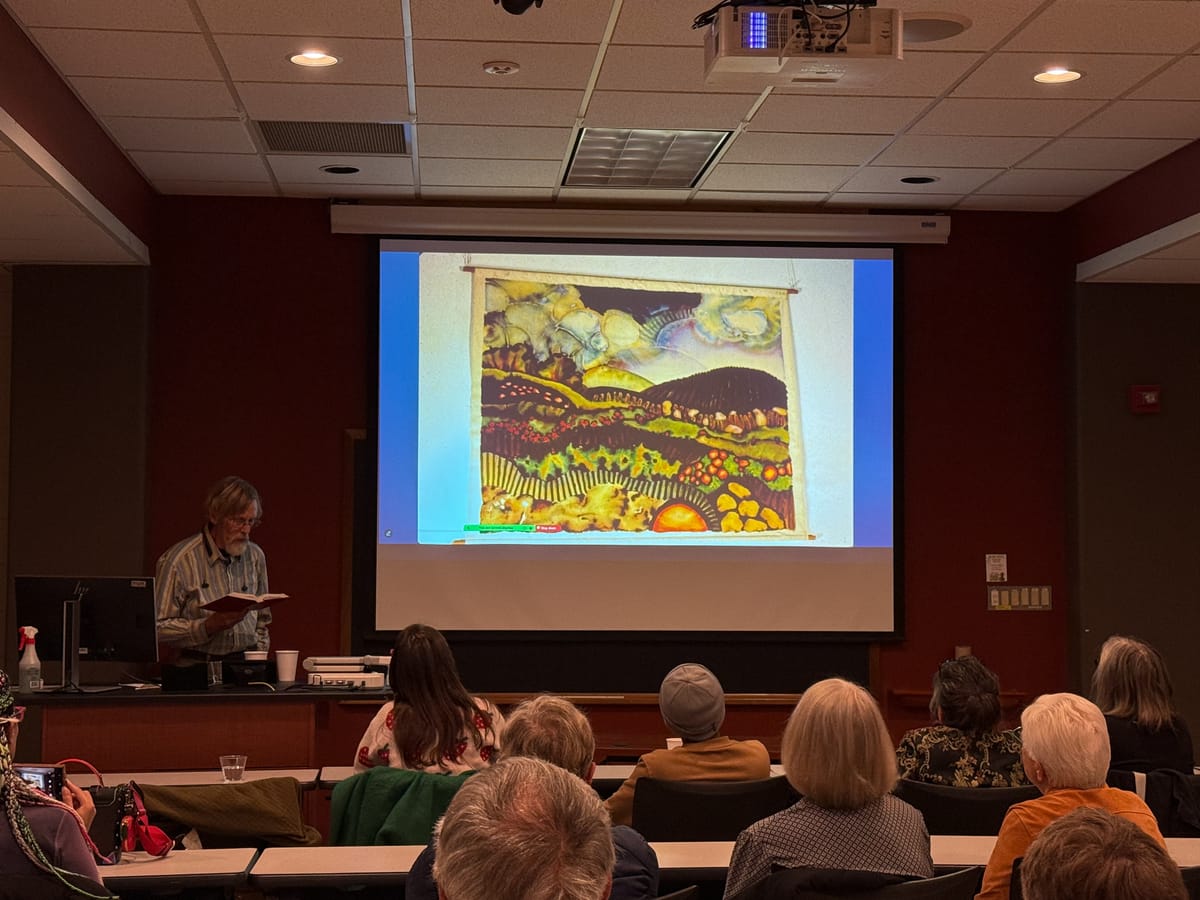“Shrines and Portals” invites campus into the mind of artist Darrel Nelson

From Oct. 9 to Nov. 6, artist and former Augustana educator Darrel Nelson shared a glimpse into his “messy mind” through his assembled and wooden works in an exhibit titled “Shrines and Portals,” with a closing reception in the Eide/Dalrymple gallery that gained a crowd of students and professors alike.
Each “shrine” or “portal” — small wooden sculptures designed to convey tones of religion and devotion to nature — was uniquely crafted in a slightly geometric way, often topped with bones, plants or feathers found by Nelson as he “wandered.”
Nelson not only paid homage to the state with his art but also to Augustana. According to the exhibit’s website, Nelson helped teach sculpture from 1980–89 as a part of a joint art program between Augustana and Sioux Falls College.
Current Professor of Art Scott Parsons, whose time at Augustana as a student overlapped with Nelson’s time as an educator, remembered his mentor well.
“I saw Darrel and his family a lot as a student, and then later, I visited him many times in the Black Hills — where he currently lives,” Parsons said. “Upon hearing him talk at the reception and to students last week, it was like no time had passed at all.”
Parsons added that Nelson had been a strong advocate for him in his education. When confronted by doubt over a painting he had made, Parsons recalled that Nelson examined it and offered words of affirmation, calling the brushstrokes impressive work.
“I think about this moment quite often,” Parsons said. “It's just one of those casual moments that ends up hitting just the right chord and stays with you for a lifetime.”
Senior art major Bailey Berghult discussed her thoughts on the memorability of Nelson’s work even despite her study of art as a subject.
“Nelson’s works were so unique in how he chose assemblage, which is taking pieces of found objects and combining them into new and unique forms,” Berghult said. “His sculptures feel really intimate and personal, but yet also seem to connect to the landscape around us, inviting the viewer to think about the materials and what they represent.”
Senior art student Ava Brandt noticed Nelson’s appreciation for nature, believing that throughout his different experiences in life, he has learned to appreciate the rural area he lives in.
“He did his master’s in wood carving in Korea but is from the Midwest,” Brandt said. “I think his having both of those experiences, among so many others, impacted how he appreciated rural areas. That’s a perspective that, in South Dakota, people usually incorporate within their art.”
What struck viewers like Berghult and Brandt was Nelson’s use of different types of pristinely carved or found pieces of wood, spanning from tropical hardwood, walnut and unidentified branches. Using natural materials and lost items is not atypical in art, but to see so many in one room left students in awe.
“The artist managed to transform everyday objects that are often overlooked into something so thoughtful and expressive,” Berghult said. “Another thing that really stood out to me was this use of tension and the creative feeling that the sculptures are about to shift.”
An example of these artistic values is seen in the piece “Industrial Icon,” an assemblage of tulip wood, oak and mixed hardwood that mimics a machine with a needle-point at the end, looking as if it could move any second.
Nelson’s closing reception was, as he put it, a “glimpse into his mind.” Through almost 200 slides in over an hour, Nelson presented to a room full of viewers images that inspired him to create his shrines and portals. He shared examples of his previous work not included in the gallery, many of which were tied into his Catholic past.
Nelson explained during his talk that he was once an avid participant in his church and created many pieces inspired by worship.
“If you don't have a religion that explains things for you, life, death, morality, everything else, then you'd better come up with something,” Nelson said. “And I'm working on that something, and a lot of it has to do with the first three and a half, four billion years of the Earth.”
In the same way nature has grounded Nelson, so has teaching others. Those who walked through the gallery appreciated the unique pieces, and getting to know someone who had been here years before them.



